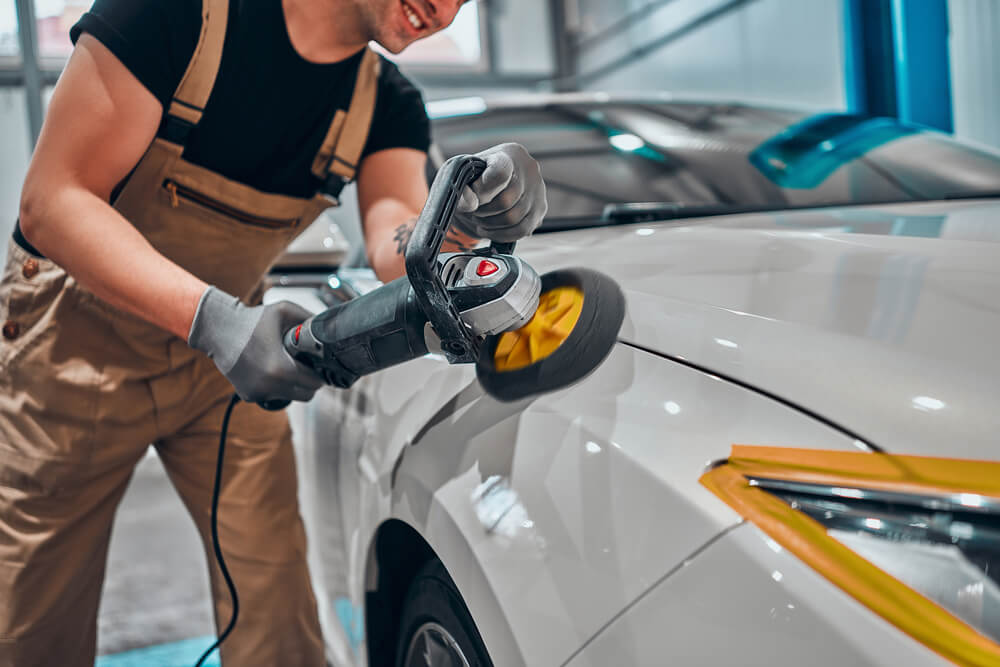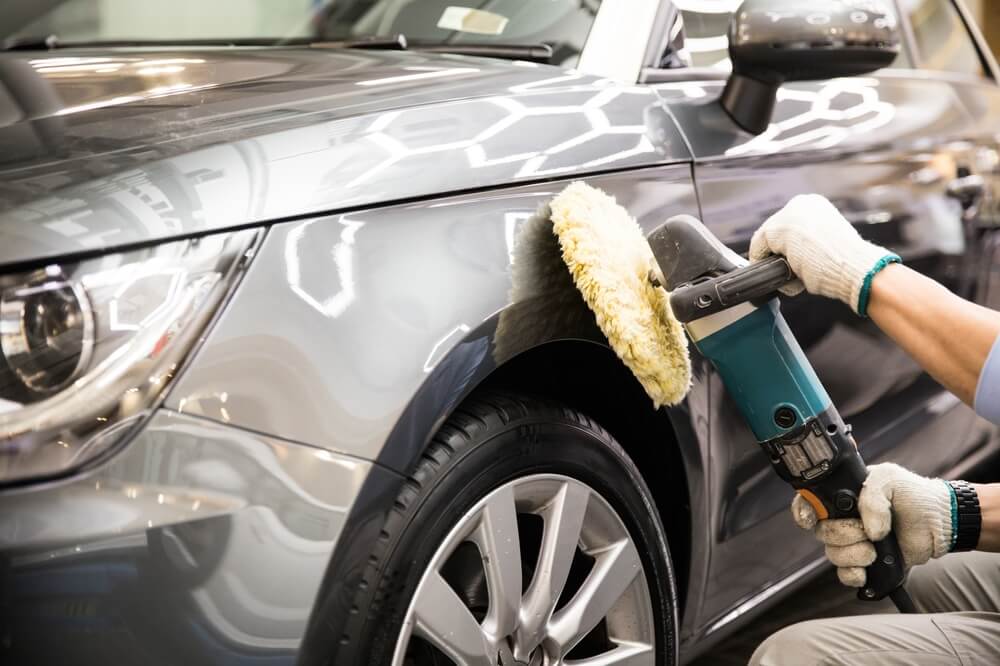Car enthusiasts and detailers alike understand the importance of maintaining a vehicle’s exterior. Over time, a car’s paint can accumulate imperfections like swirl marks, scratches, and oxidation, diminishing its appearance. Enter paint correction—a specialized detailing process designed to restore and rejuvenate a car’s paintwork to its former glory. In this comprehensive guide, we’ll explore what paint correction entails, its benefits, and the different techniques involved in achieving flawless results.
What is Paint Correction?
Paint correction is a meticulous process that involves restoring the paintwork of a vehicle by eliminating imperfections and enhancing its overall appearance. These imperfections can include swirl marks (fine circular scratches), scratches from improper washing or environmental hazards, water spots, oxidation, and other blemishes that detract from the paint’s clarity and gloss.
What Does Paint Correction Do?
The primary goal of paint correction is to improve the visual appearance of the car’s paint by removing imperfections and restoring depth and clarity. This process not only enhances the aesthetic appeal but also protects the paint from further deterioration.
Techniques and Levels of Paint Correction
1. One-Step Paint Correction
One-step paint correction is a basic level that typically removes around 65% of surface defects. It involves using a single polishing compound or abrasive polish to correct minor imperfections such as light swirl marks and scratches. This process is relatively quicker and less aggressive compared to multi-step corrections, making it suitable for cars with minimal paint imperfections.
2. Two-Step Paint Correction
Two-step paint correction is more intensive and removes approximately 80% of imperfections. It involves using two different grades of polishing compounds or abrasives—a more aggressive compound to tackle deeper scratches and swirl marks, followed by a finer polish to refine the paint surface. This level of correction is ideal for cars with moderate to severe paint defects that require thorough restoration.
3. Three-Step Paint Correction
Three-step paint correction is the most comprehensive level, aiming to remove up to 95% or more of imperfections from the paint surface. It involves using three stages of polishing compounds or abrasives—a heavy-cut compound for deep scratches and oxidation, followed by intermediate and fine polishes to refine and restore the paint to its optimal condition. This meticulous approach is typically reserved for heavily damaged or neglected paintwork, producing showroom-quality results.
Car Color Correction
Car color correction is an integral part of paint correction, focusing on enhancing and restoring the vibrancy and depth of the paint’s color. Over time, exposure to sunlight, pollutants, and improper care can cause the color to fade or appear dull. Color correction techniques involve using specialized products and polishing methods to rejuvenate the paint’s color, bringing back its original richness and luster.

The Process of Paint Correction
Now, let’s outline the typical steps involved in a professional paint correction process:
1. Inspection and Evaluation
Every paint correction job begins with a detailed inspection of the vehicle’s paintwork to assess the extent and type of imperfections present. This step is crucial for determining the appropriate products and techniques needed to achieve the desired results.
2. Preparation
Preparation involves thorough cleaning of the vehicle to remove dirt, grime, and contaminants from the paint surface. This ensures that the correction process can be performed effectively without causing further damage.
3. Correction Process
The correction process starts with the application of polishing compounds or abrasives using a dual action polisher (DA polisher) or rotary polisher. The detailer carefully works the compound over the paint surface, gradually leveling out imperfections such as swirl marks and scratches. The choice of compounds and pads depends on the severity of the imperfections and the type of paint.
4. Refinement
After correcting the major imperfections, the paint undergoes refinement using finer polishing compounds and softer pads. This step enhances the gloss, clarity, and smoothness of the paint surface, achieving a mirror-like finish.
5. Final Inspection and Protection
The final stage involves inspecting the paint under different lighting conditions to ensure all imperfections have been addressed and the desired level of correction has been achieved. To protect the freshly corrected paint, a layer of wax, sealant, or ceramic coating is applied. These products provide long-lasting protection against UV rays, environmental contaminants, and water spotting, preserving the paint’s finish and making maintenance easier.
Benefits of Auto Paint Correction
The benefits of paint correction extend beyond aesthetic improvements:
- Enhanced Aesthetic Appeal: Achieves a deep, glossy finish that enhances the car’s overall appearance.
- Preservation of Paint: Protects the paint from further deterioration, extending its lifespan and maintaining its resale value.
- Improved Protection: Adds a protective layer that repels contaminants and makes cleaning easier.
- Professional Finish: Provides a professional-grade finish that rivals showroom quality.
Conclusion
In conclusion, paint correction is a specialized detailing process that transforms the appearance of a car’s paintwork by removing imperfections and restoring its original luster. Whether opting for a one-step, two-step, or three-step correction, the goal remains the same: to achieve a flawless finish that enhances both the aesthetic appeal and protective properties of the paint. Understanding the techniques and benefits of paint correction empowers car owners to make informed decisions about maintaining and enhancing their vehicle’s exterior.
If you’re considering paint correction for your car, consult with a professional detailer to assess your vehicle’s needs and discuss the best approach for achieving optimal results. Remember, a well-maintained paint finish not only enhances the pride of ownership but also protects your investment for years to come.
I hope this detailed exploration of paint correction helps clarify its benefits and techniques! If you have any questions or insights to share, feel free to leave a comment below. And don’t forget to like, share, and subscribe for more informative content on car care and detailing

